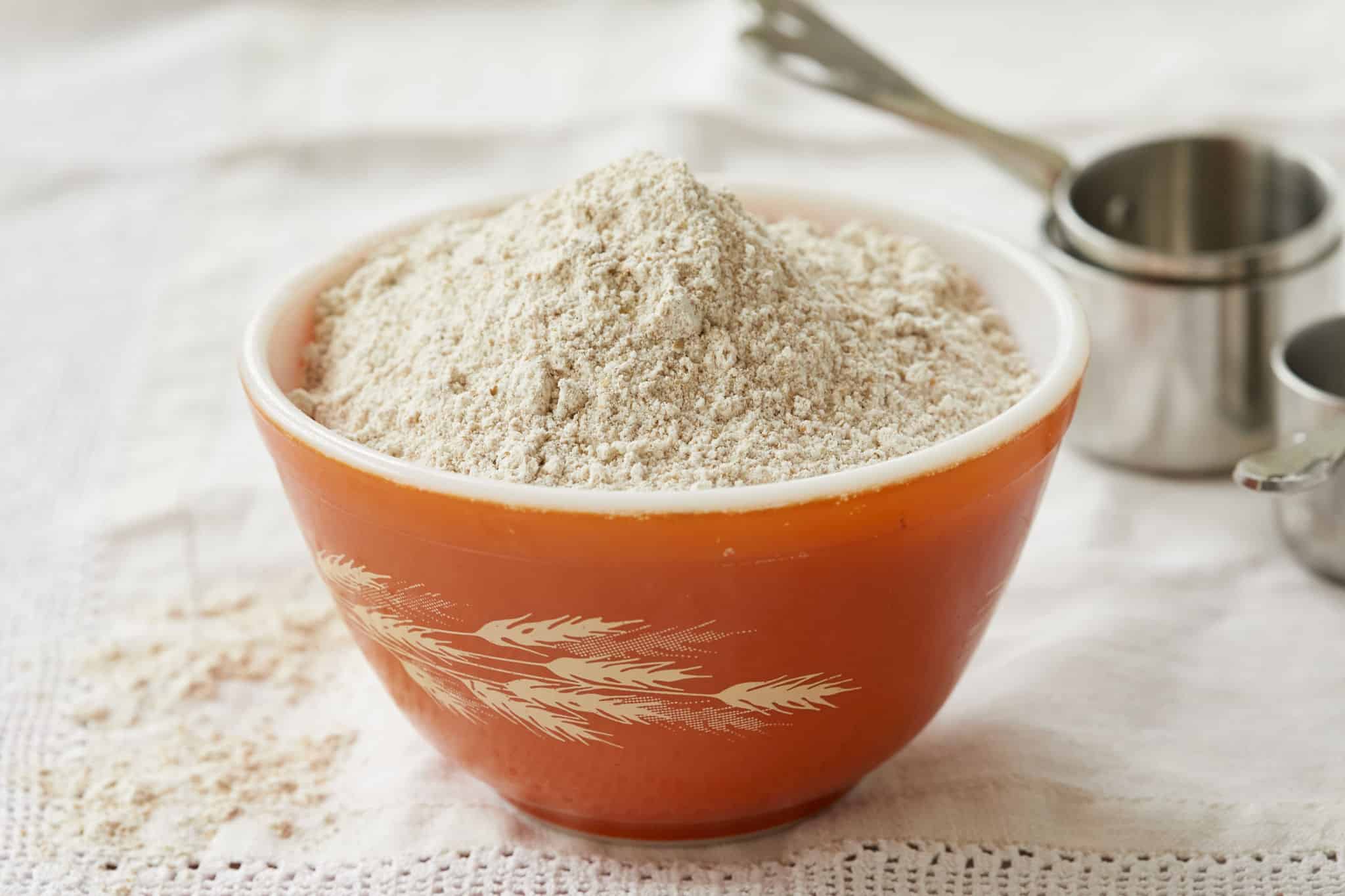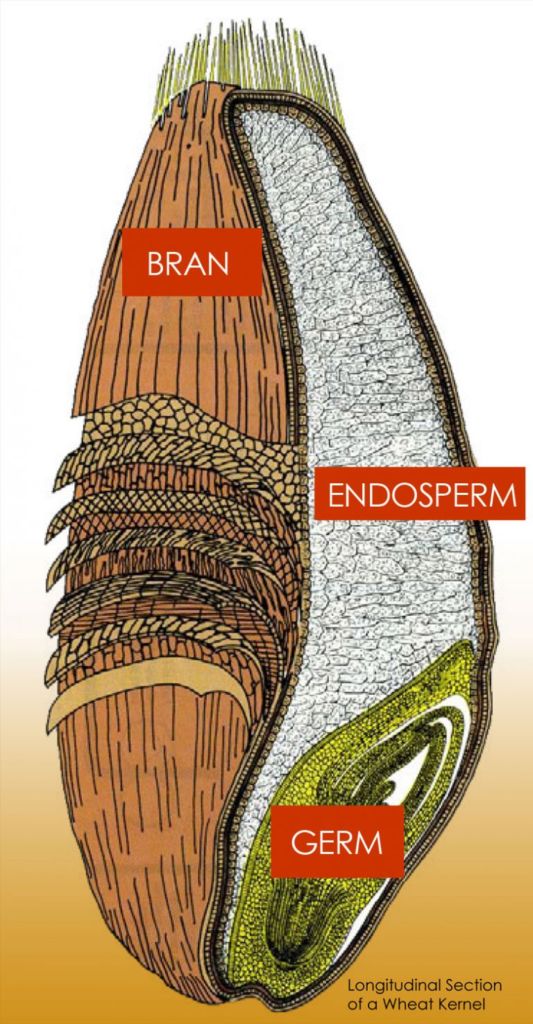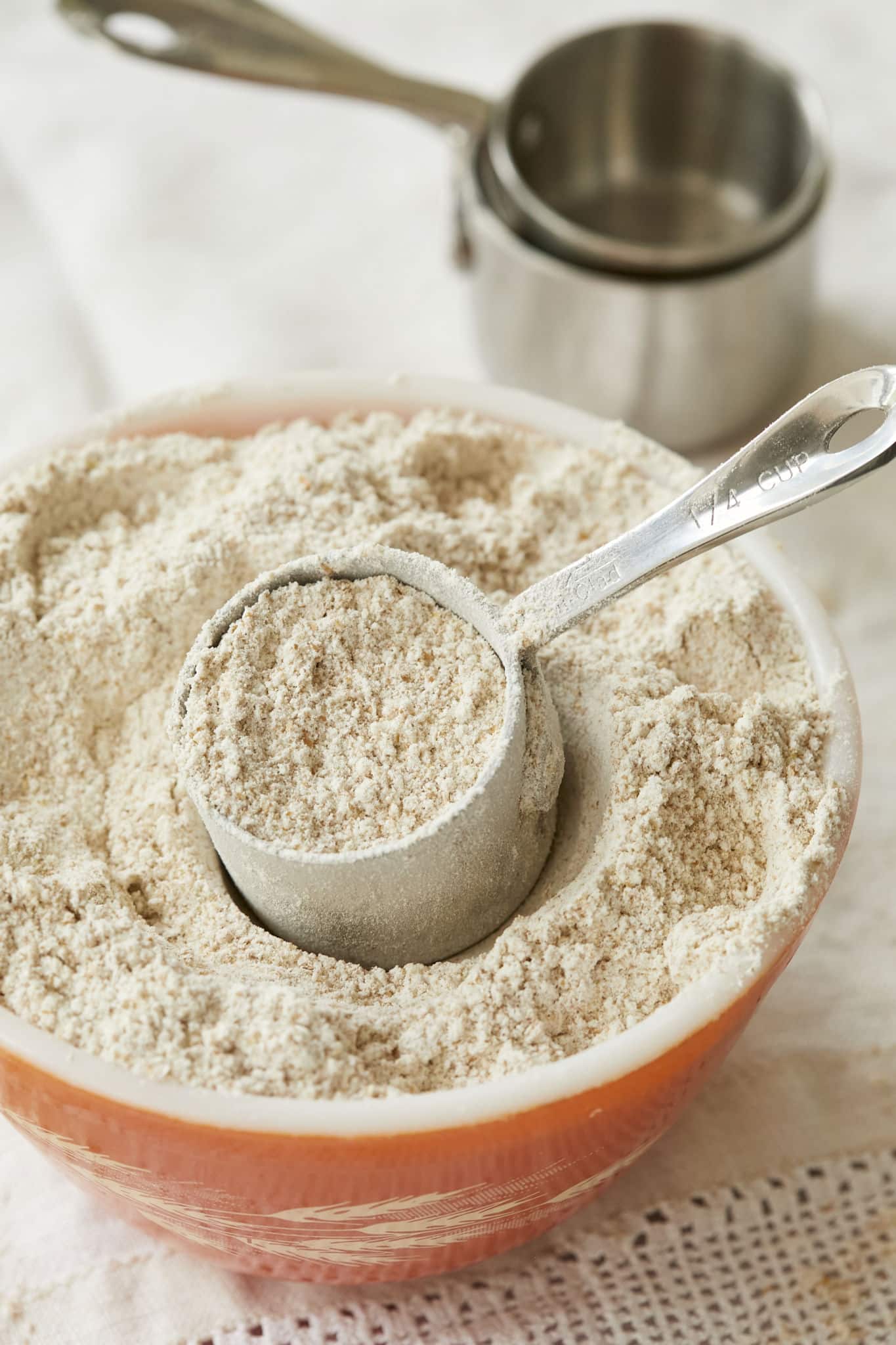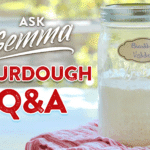
This post may contain affiliate links. Please see my full disclosure for details.
Hi Bold Bakers!
WHAT YOU GET: In this article, you’ll find out what differentiates baking with whole wheat flour from white flour and how to incorporate it into your future treats!
Whole wheat flour is a staple in many “healthy baking” recipes, but have you ever wondered why it’s better for you? Below, I break down all the health benefits of whole wheat flour — and how it will change your baking.
Disclaimer: This blog does not provide medical advice. This blog post is meant to provide general information and open a discussion surrounding health and food. The following information, and any link to other websites, should not be considered medical advice. If you or another person has a medical concern, please contact your health care provider or seek other professional medical treatment.
What Is Whole Wheat Flour? Whole Wheat Flour Vs. All Purpose Flour
Whole wheat flour is made by grinding the entire wheat kernel. A kernel of wheat contains the bran, the germ, and the endosperm. The wheat bran is the hard outer shell of the wheat kernel that is packed with fiber and nutrients. The germ is the nutrient-packed middle of the kernel, which is used for reproduction. The endosperm is made of starch and makes up most of the inside of the wheat kernel.
White flour, or all-purpose flour, removes the bran and germ in its production process and is made from just the endosperm. The removal of the bran and germ gives AP flour a fluffy, smooth texture. Since whole wheat flour is made from the entire wheat kernel, it is denser and darker in color than white flour.

This diagram of a kernel of wheat, from the Wheat Foods Council, is a helpful tool for understanding the different parts of wheat kernels.
The Nutritional Benefits of Whole Wheat Flour
Since whole wheat flour is made with both the bran and the germ, which are the most nutritious parts of the wheat kernel, whole wheat flour has a number of health benefits, including:
- Whole wheat flour is a good source of fiber, protein, and carbs.
- It is high in folate and vitamins, including B vitamins.
- It is high in minerals such as manganese and magnesium.
- It is known to reduce LDL (bad) cholesterol levels, which can lower one’s risk of heart disease, heart attacks, and strokes.
How To Use Whole Wheat Flour In Baking
Although whole wheat flour can replace white flour in a 1:1 ratio when baking, I don’t recommend using all whole wheat flour unless the recipe calls for it. Baked goods made with all whole wheat flour tend to be dry, dense, and have a slightly bitter flavor. To combat this, I like using half whole wheat and half all-purpose flour when baking.
What Is White Whole Wheat Flour?
Many people think white whole wheat flour is a mixture of white flour and whole wheat flour, but that’s not the case. White whole wheat flour is 100% whole wheat — but it is made from a different kind of wheat. Regular whole wheat flour is made from “red” wheat, while white whole wheat flour is made from “white” wheat. Think about apples; there are many different types of apples that all taste different, but, at the end of the day, they all taste like apples.
White wheat has a more subtle flavor and a lighter color than red wheat, but the nutritional values of the two are basically identical. This makes white whole wheat a great alternative to regular whole wheat flour because it tastes more like white flour while still having the nutritional benefits of whole wheat flour.
Keep in mind that although white whole wheat flour has a better flavor than regular whole wheat flour, it has a similar, dense consistency since it includes all parts of the kernel, so baked goods made with white whole wheat flour will be denser than if they were made with white flour.

The Difference Between Whole Wheat And Whole Grain
Wheat is a type of grain. Other grains include oats, millet, barley, rice, etc. The “whole” part just means it has not been processed to remove parts of the grain, while all-purpose flour removes the bran and germ. Any grain that hasn’t been processed can be considered a whole grain, including wheat products. Therefore, all whole wheat products are whole grains, but not all whole grain products are whole wheat.








TY for this information. I’m trying to perfect my whole wheat bread machine recipe.